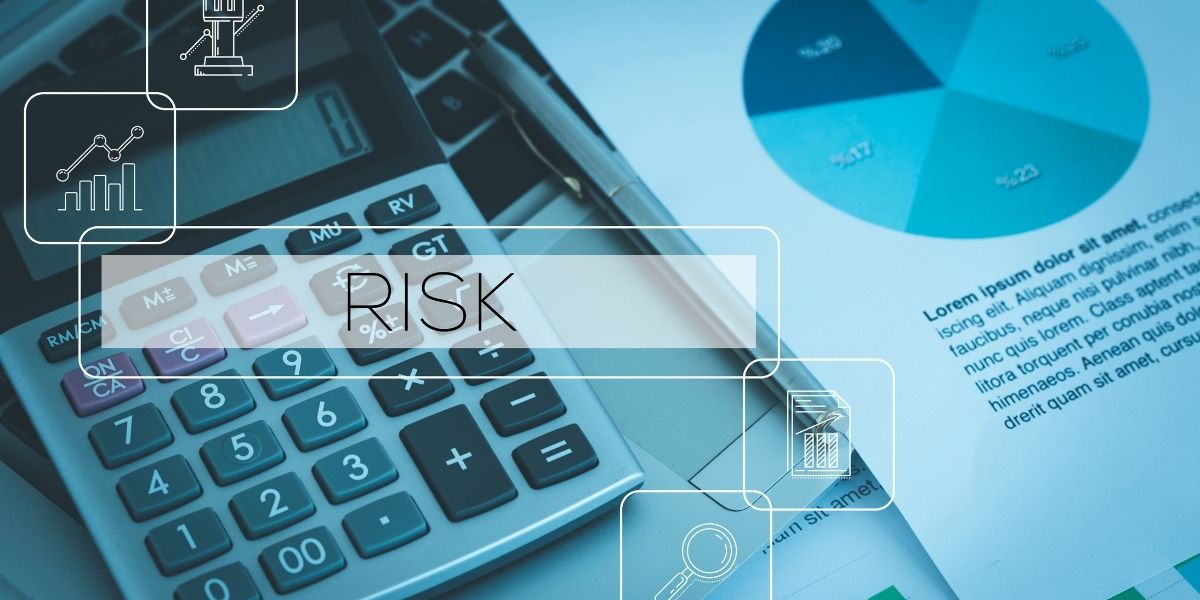Every project faces challenges, and understanding the types of risks in project management is vital for successful execution. Effective management of these risks can mean the difference between project failure and success. With the right approach, teams can identify potential setbacks before they escalate and take proactive measures. This comprehensive guide will explore the various risks associated with projects, including organizational, technical, and financial risks in project management, among others.
The Importance Of Analyzing Project Risks
Analyzing project risks is a critical step in ensuring the success of any project. It allows project managers to identify potential risks early, evaluate their impact, and develop strategies to mitigate or avoid them. This proactive approach not only helps in avoiding considerable delays and budget overruns but also enhances decision-making and efficient resource allocation.
By analyzing project risks proactively, project managers can set realistic expectations, and maintain control over the project’s direction. Ultimately, risk analysis is essential for minimizing uncertainties and achieving project objectives efficiently and effectively.

Different Project Risks Categories
In the PMBOK (Project Management Body of Knowledge) framework, risks are sorted into three categories: operational risks, short-term strategic risks, and long-term strategic risks.
- Operational Risks: These are risks commonly arise in the later stages of a project and can impact the execution and delivery of project tasks. Operational risks typically involve issues such as product availability, process inefficiencies, or technical challenges.
- Short-Term Strategic Risks: Short-term strategic risks are risks that impact during the project’s lifetime and its immediate aftermath. These risks may also affect the people who use the project’s results.
- Long-Term Strategic Risks: Long-term strategic risks are those that affect project’s objectives and goals. These risks can impact users who are not directly involved in the project’s processes but are affected by its outcomes.
10 Popular Types of Risks in Project Management
Project risks can be classified into different categories. Here, we will discuss the 10 types of project risks that project managers should keep an eye on for effective project delivery.
1. Financial Risks
Financial risks are the most common risk businesses face in project management . Financial risks can arise from budget overruns, unexpected costs, or economic changes that impact funding sources. Additionally, financial risks can stem from poor financial planning, inaccurate cost estimates, or fluctuations in exchange rates, interest rates, and market conditions. If not properly managed, financial risks can lead to significant project delays, cost-cutting measures, and, in extreme cases, project failure.

Effective financial risk management involves:
- Set realistic budgets
- Regular monitor expenses
- Prepare detailed financial planning
- Perform risk assessments
2. Technical Risks
Technical risks in project management emerge when challenges arise due to technology and technical systems that a project relies on. These risks are particularly prevalent in projects reliant on technology, including software development, infrastructure upgrades, and technology implementation initiatives.
Issues may arise from a lack of technical expertise, outdated tools, cyberattacks, system breaches, or other unforeseen problems that can hinder a project from achieving its goals. If businesses fail to address technology risks promptly, they can cause significant disruptions, such as compromised data, delayed timelines, increased costs, and reduced stakeholder confidence.
Below are effective strategies for managing technical risks:
- Identify potential risks early.
- Regularly update to the latest technology.
- Build a strong technical team.
- Strengthen cybersecurity measures.
- Prepare solution plans for potential problems.
- Continuously monitor systems.
3. Organizational Risks
Organizational risks in project management occur due to internal factors within an organization. These may involve conflicts in the team, changes in organizational structure, or inadequately defined roles and responsibilities.
Several solutions for managing organizational risks:
- Clarify roles and responsibilities
- Foster open and transparent communication within the team
- Promote a positive organizational culture
4. Schedule Risks
Schedule risks are related to delays in project timelines, causing projects to take longer to complete than initially planned. This risk happens for various reasons, including resource availability or unforeseen challenges. Proper planning and time management are essential for reducing these risks.
Consider these solutions to reduce this risk:
- Develop a Realistic Timeline
- Prioritize Critical Tasks
- Regularly Monitor Progress
- Allocate Resources Effectively
- Prepare for Unexpected Challenges
5. Operational Risks
Operational risks arise from issues in execution and process inefficiencies. However, this project risk does not affect the overall project.
Below are potential solutions for addressing this risk:
- Optimize Processes
- Strengthen Communication Channels
- Establish Clear Procedures
- Use Technology to Automate
6. Scope risks
Scope risk is a common risk to projects of all sizes and types. It arises when changes or uncontrolled expansion occur in project scope, often referred to as scope creep. This can lead to increased costs, extended timelines, and depleted resources.
These are some strategies to mitigate this risk:
- Streamline Processes
- Enhance Communication
- Provide Adequate Training
- Set Realistic Timelines and Resources
7. Quality Risks
Quality risks occur when the deliverables do not meet the required standards or expectations, leading to a rework process and additional costs.
Here are several solutions to address this risk:
- Set Clear Quality Standards
- Implement Quality Assurance Processes
- Conduct Regular Testing and Reviews
- Leverage Quality Control Tools
You can also utilize tools and software that support quality management and help track quality metrics in real-time. These tools can automate certain checks and alert the team to potential issues.
8. Stakeholder Risks
Stakeholder risks arise from the involvement and expectations of different stakeholders in a project. If stakeholders have conflicting interests or unclear expectations, this can deeply affect the project’s success.
9. Environmental Risks
Environmental risks relate to issues arising from the natural environment or external circumstances that could negatively affect project progress.
10. Legal Risks
Legal risks in project management can encompass regulatory compliance issues, contractual disputes, or changes in laws that impact project operations. Identifying legal risks early ensures that all project aspects meet relevant legal standards.
Project Risks and Mitigation
Effective risk management is essential for minimizing impacts on projects. Here are several strategies to mitigate these risks:
1. Be proactive:
In project risk management, being proactive means anticipating potential risks before they occur and taking preventive measures to mitigate their impact. By identifying and addressing risks early, project managers can reduce uncertainty, avoid costly delays, and ensure smoother project execution. Proactive risk management involves:
- Regular Risk Assessments: Continuous monitoring helps in identifying and addressing risks early.
- Stakeholder Engagement: Maintain clear communication with stakeholders to set proper expectations and reduce conflicts.
- Training Programs: Enhance team skills and knowledge to tackle technical risks and quality issues.
- Flexible Planning: Adaptability in project plans allows teams to respond quickly to unforeseen impacts.

2. Adopt an Agile Approach:
In project management, adopting an Agile approach can significantly enhance risk management and mitigation strategies. As explained by Druckman, Scrum, a popular Agile methodology, is particularly effective in high-risk projects, especially when facing uncertainty or resource limitations. When projects involve new challenges, inexperienced teams, or limited resources, Scrum breaks the project into manageable, time-bound intervals known as sprints.
These sprints allow teams to focus on specific tasks and deliverables, ensuring that progress is made incrementally. This approach enables the team to quickly identify and address risks as they arise, rather than waiting until later stages of the project. By continuously assessing and adjusting the project’s scope, resources, and timelines throughout each sprint, the Agile method helps manage risks effectively, reducing the chances of delays, budget overruns, or scope creep.
Read more: Daily Standup in Scrum– Small Changes, Big Impact
3. Prioritize Straightforward Projects
Focus your efforts on projects that are well within your expertise and have a high likelihood of success. Projects that resemble previous successful ones carry fewer risks, making them easier to manage. The time spent struggling with a challenging project can far exceed the time needed for multiple straightforward ones. By evaluating potential projects carefully, you can avoid wasting resources on high-risk or unprofitable endeavors while focusing on strengthening your core business. This strategy not only minimizes risks but also keeps your team engaged and motivated by consistently delivering successful outcomes.
4. Measure the Impact of Risks
Whenever possible, assess and quantify the potential impact of project risks. Different risks can result in varying levels of cost or disruption, and by attaching measurable data or specific financial figures to these risks, you can better prioritize which ones require immediate attention. This approach not only helps in managing risks more effectively but also makes it easier to communicate the severity of these risks to stakeholders who may not be familiar with the project’s details. By providing concrete numbers, you can gain more support and alignment from key decision-makers.
Conclusion
Understanding the various types of risks in project management is crucial for any project manager aiming for success. From technical and financial risks to stakeholder and environmental risks, the need for proactive identification and mitigation strategies is vital. As you navigate your projects, remember to plan diligently, engage stakeholders systematically, and remain adaptable to changes. Engaging with your team and stakeholders can significantly ease encountering project risks and lead you toward successful project delivery.
For more in-depth discussions on project management strategies, click here to explore further resources.

